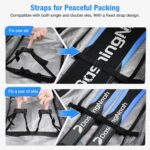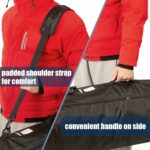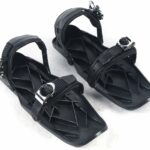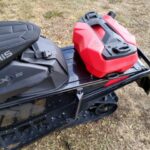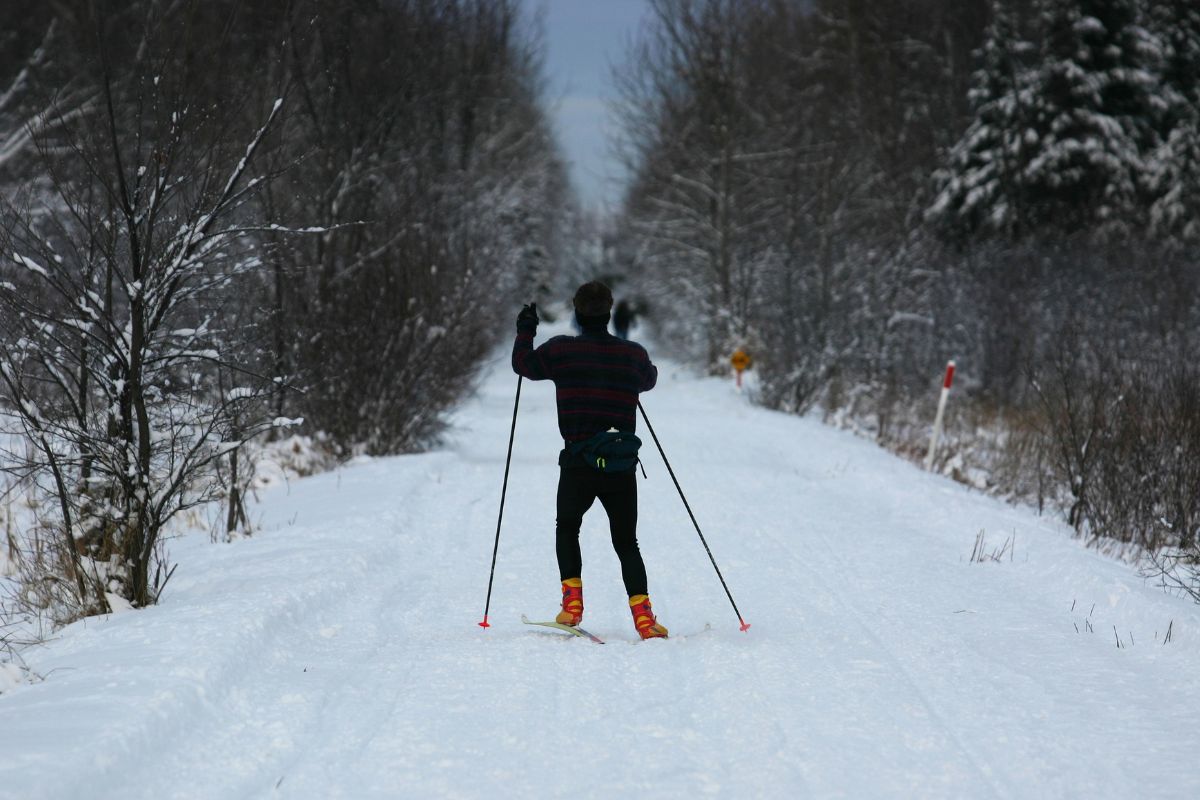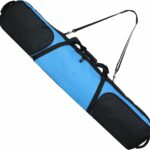Skiing is a great activity that can be incredibly rewarding when you have a good session.
While it does take some practice to get really good at it, a lot of the time, a good ski session will depend largely on how prepared you are.

One of the most important parts of preparing for skiing is wearing the right clothes.
If you wear the wrong clothes, you can end up cold and wet and in some cases, this can be quite dangerous. In order to wear the right clothes, you have to know how to properly layer them.
We’ll be going over everything you need to know about layering for skiing so the next time you go out for a session, all you will need to do is focus on your skills!
How To Layer For Skiing
In order to properly layer yourself for skiing, you have to know a bit more about the different layers that are required. The clothes you wear when you are skiing (see also “What To Wear Cross Country Skiing“) are broken down into three different layers:
- Bases Layers
- Mid Layers
- Outer Layers
You need to make sure that all your layers are optimized to keep you both warm and flexible. In some cases, you will also need to shed or add layers, so it’s helpful for you to be prepared for that too.
If you are skiing in the mountains, it’s important to know that the weather can change pretty quickly, so you need to be prepared for that.
Base Layers
The first layer you are going to want to focus on is the base layer. These clothes should be able to wick away any moisture that clings to your body.
Believe it or not, you can sweat quite a bit when you’re skiing, even in the coldest conditions.
Base layers are designed to manage that sweat and keep it from clinging to your body.
Sweat can get very cold and even with the mid and outer layers, if your base layers aren’t correct, it can cut your trip short. The best materials for base layers include wool, nylon, and polyester.
Long-Sleeve Thermal Top
You will need a long-sleeve thermal top that is form-fitting. This style of top will keep you warm and it is also fantastic for mobility.
Thermal Leggings
A quality pair of thermal leggings really make all the difference when you are skiing. You want these leggings to be fitted and breathable.
Make sure that you tuck your top into your leggings as well. You can usually get a matching set of leggings with your thermal top.
Socks
Socks are also incredibly important and you need to make sure they are of high quality. If you have one single pair of thick, high-quality socks, this means you can avoid layering them.
You also want to make sure that these socks are long enough that they come just above your boots, so you can avoid any uncomfortable rubbing.
Mid Layers

Mid layers are designed to trap body heat and keep you warm without making you sweat too much.
You only really need to focus on the top part of your body for mid-layers, as the legs usually have just enough body heat to keep your lower half warm.
Long-sleeve Mid-Layer Top
All you really need for your mid-layer is a long-sleeve top that is slightly looser than your base layer. You want to make sure that this long-sleeve top will keep your body heat trapped.
The most common and popular option for a mid-layer item of clothing is usually a fleece, but you can also opt for a thin-down jacket or a thin merino wool sweater.
Outer Layers
Finally, let’s take a look at your outer layers. The most important feature of the outer layers is that they are completely waterproof.
Your outer layers are designed to keep you safe from the elements, and because you’ll be in an environment where there’s lots of snow and rain (see also “Are Rain Boots Good For Snow?“), waterproof clothing is absolutely essential .
Waterproof Jacket
Waterproof jackets are imperative when it comes to working out your outer layers. There are plenty of lightweight and breathable waterproof jackets out there, so you won’t have a hard time finding them.
A popular material used by skiers is Gore-tex, so if you see something with this name on it, it will be good for skiing.
You also want to make sure that your jacket comes with a zipper, so it’s easy to take off if you get too warm.
Waterproof Gloves
You also need to make sure that you keep your hands protected when you are skiing. If your hands are exposed, they can get too wet and too cold, and then you will have to cut your ski trip short.
You just need to make sure that your gloves are waterproof and comfortable to wear. Make sure that they are the right size as well or this can impair your skiing.
There are some gloves you can purchase that are heated and can stay warm for up to 10 hours, so if you want to invest in heated gloves, you can!
Down Jacket
You only really need a down jacket if it gets extra cold while you are skiing. Just bring this with you in case of emergencies. Even if you don’t end up using it, you’ll be glad you had it on hand!
Buff
This is another item that you don’t necessarily need, but having it on hand can be really helpful.
Buffs are used to keep your neck and face warm on colder days, and if you find yourself in a position where it has gotten really cold, having a buff ready to put on can stop you from cutting your trip short.
Conclusion
Knowing how to correctly layer for skiing will really save you a lot of time and effort.
Use the guide we have provided for you here when you need to prepare for your next ski trip so you can spend more time skiing than worrying about getting cold!
- How to Choose a Skim Board - September 10, 2023
- is Skim Boarding Hard? - February 8, 2023
- How To Wax a skim board - February 8, 2023



